As the demand for healthier and more convenient outdoor cooking solutions grows, the smokeless grill has emerged as a game-changer in the culinary landscape. This innovative cooking method has captured the attention of homeowners across the US and Europe, offering a cleaner, more efficient way to enjoy the great outdoors. In this article, we delve into the key features that differentiate smokeless grills, the market trends driving their popularity, the environmental benefits they bring, the technological advancements propelling the industry forward, the brands leading this revolution, the consumer preferences shaping the market, and the future predictions and opportunities that lie ahead for smokeless grills.
Understanding the Rise of Smokeless Grills in the Western Markets
The rise of smokeless grills in the Western markets has been a fascinating phenomenon, transforming the way people enjoy outdoor cooking. With a keen eye on consumer trends and technological advancements, it’s clear that this shift is not just a fleeting trend but a significant evolution in the way we grill.
In recent years, smokeless grills have gained a strong foothold in the US and Europe, thanks to a combination of factors that cater to the modern consumer’s desires for convenience, health, and sustainability. These sleek, efficient appliances have managed to carve out a niche in a market traditionally dominated by traditional charcoal and gas grills.
One of the primary reasons for the surge in popularity of smokeless grills is the emphasis on health and wellness. The days of smoky, carcinogenic emissions are fading into the past, as smokeless grills use advanced technology to eliminate smoke and reduce harmful pollutants. This has been a particularly appealing feature for health-conscious consumers who are looking for a way to enjoy grilled foods without the negative health effects associated with traditional grilling methods.
Moreover, the convenience factor cannot be overlooked. Smokeless grills are designed to be user-friendly, with features like easy-to-use digital controls, automated cooking processes, and minimal cleanup. This convenience appeals to busy families and individuals who want to enjoy delicious grilled meals without the hassle of dealing with smoke, ashes, or the need for constant attention.
Another driving force behind the popularity of smokeless grills is the environmental movement. As awareness of climate change and pollution grows, consumers are increasingly seeking out products that are more sustainable. Smokeless grills, with their reduced emissions and efficient use of energy, align with these values, making them an attractive choice for eco-conscious consumers.
The technology behind smokeless grills is also a key factor in their success. These grills utilize various methods, such as convection cooking, to ensure even heat distribution and to lock in the flavors of the food without the need for smoke. Some models even come with infrared cooking capabilities, which can provide an even faster and more precise cooking experience.
In the Western markets, particularly in the United States and Europe, there is a strong emphasis on innovation and quality. As a result, smokeless grill manufacturers have responded by introducing a wide range of products that cater to different tastes and preferences. From compact, portable models perfect for tailgating and camping to larger, high-end units suitable for backyard entertaining, there is a smokeless grill for every lifestyle.
The competition in the market has also led to a surge in innovation. Brands are continuously striving to outdo each other by introducing features like built-in thermometers, Wi-Fi connectivity for remote monitoring, and even Bluetooth capabilities for pairing with smartphones. These advancements not only enhance the cooking experience but also appeal to tech-savvy consumers who are looking for the latest and greatest in outdoor cooking technology.
Consumer behavior is also playing a role in the rise of smokeless grills. As people become more accustomed to the convenience and health benefits, they are more willing to invest in these products. Additionally, the rise of social media and online reviews has made it easier for consumers to discover and share their experiences with smokeless grills, further fueling their popularity.
Looking ahead, the future of smokeless grills in the Western markets looks bright. With the continued focus on health, convenience, and sustainability, these grills are poised to become even more mainstream. As manufacturers continue to innovate and consumers become more aware of the benefits, it’s likely that smokeless grills will become a staple in many outdoor kitchens and patios across the West.
In summary, the rise of smokeless grills in the Western markets is a testament to the changing landscape of outdoor cooking. It’s a trend that reflects the values and priorities of modern consumers, offering a healthier, more convenient, and environmentally friendly alternative to traditional grilling methods. As technology continues to advance and consumer awareness grows, smokeless grills are set to become a permanent fixture in the world of outdoor cooking.

The Evolution of Outdoor Cooking: From Barbecues to Smokeless Grills
The journey of outdoor cooking has been a fascinating blend of tradition and innovation. Once a simple affair, grilling has transformed into an art form that has evolved over centuries. From the humble beginnings of open flame cooking to the sleek designs of modern smokeless grills, the evolution of outdoor cooking reflects a shift in technology, culinary trends, and environmental consciousness.
In the early days, outdoor cooking was a straightforward process of placing food directly over a fire or using stones to heat the surface. The hearth was the heart of the community, a place where people gathered to cook and socialize. As time went on, the introduction of barbecues brought a new level of convenience. These metal structures allowed for better control of the fire and enabled cooks to achieve a more even cooking temperature.
Barbecuing became a popular way to prepare meats, as the slow cooking process with indirect heat infused the food with rich smoky flavors. The iconic image of a barbecue often brings to mind a weekend of socializing, with friends and family gathered around a sizzling grill, enjoying the aroma of food being grilled to perfection. This era of outdoor cooking was characterized by the open flames that generated the smoky taste, a testament to the connection between food and the environment.
However, with advancements in technology and a growing awareness of environmental concerns, the landscape of outdoor cooking began to change. The rise of smokeless grills represented a significant shift in how people approach outdoor cooking. Unlike traditional barbecues, these modern appliances eliminate or drastically reduce the smoke and flame associated with traditional grilling methods.
Smokeless grills utilize convection cooking techniques, which circulate heat around the food, ensuring that it is cooked evenly without the need for an open flame. This innovation has allowed for a cleaner and more efficient cooking experience. The absence of smoke not only makes the cooking process more pleasant for those with respiratory issues or allergies but also minimizes the environmental impact, as there is less soot and fewer pollutants released into the air.
The design of smokeless grills has also followed a path of refinement. Early models were often bulky and lacked the aesthetic appeal of traditional barbecues. But as the market grew, manufacturers started to focus on sleeker, more compact designs that blended well with outdoor living spaces. Today, you can find smokeless grills in a variety of shapes and sizes, from portable units that can be taken on camping trips to larger models that serve as the centerpiece of a backyard entertainment area.
One of the most intriguing aspects of the smokeless grill revolution is the variety of features now available. From digital temperature controls that allow for precise cooking to advanced smoking capabilities that can replicate the flavors of traditional smokers, these grills offer a level of versatility that was once reserved for the indoors. Some models even come with integrated thermometers and timers, making them as user-friendly as their indoor counterparts.
Despite these advancements, the essence of outdoor cooking remains the same. It’s about sharing food, stories, and laughter with loved ones. The smokeless grill has become a bridge between tradition and modern convenience, allowing people to enjoy the communal experience of cooking outdoors while respecting the environment.
The evolution of outdoor cooking from barbecues to smokeless grills is a story of human ingenuity and adaptability. It’s a journey that shows how technology can enhance our lives without compromising our values or the world around us. Whether it’s the satisfaction of a perfectly grilled steak or the peace of mind that comes from knowing you’ve contributed to a cleaner world, the smokeless grill has become an essential part of our outdoor cooking experience.
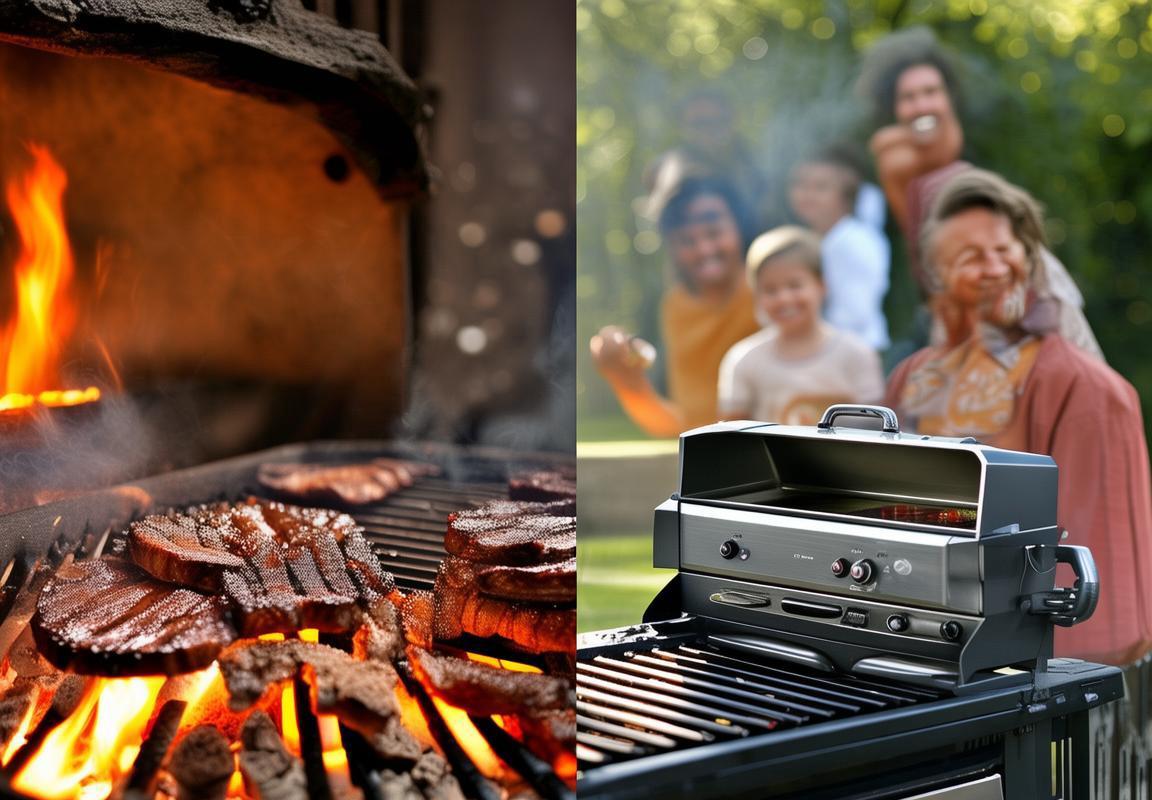
Why Smokeless Grills Have Gained Popularity in the US and Europe
The surge in popularity of smokeless grills in the United States and Europe is a testament to a shift in consumer preferences and environmental consciousness. Here are several factors contributing to this trend:
Health and WellnessOne of the primary reasons smokeless grills have gained traction in these regions is the health benefits they offer. Traditional barbecues often produce smoke and harmful chemicals, which can be detrimental to respiratory health. Smokeless grills, on the other hand, minimize these risks, making them an attractive option for health-conscious consumers.
Ease of UseModern smokeless grills are designed for convenience. They often come with features that simplify the grilling process, such as digital temperature controls, easy-to-clean surfaces, and quick-start igniters. This ease of use appeals to busy homeowners who want to enjoy outdoor cooking without the hassle of tending to a traditional barbecue.
Environmental ConcernsWith growing environmental awareness, the reduction of smoke emissions has become a significant factor in the appeal of smokeless grills. These grills produce less smoke and are often more energy-efficient, contributing to a smaller carbon footprint. This aligns with the European Union’s push for sustainable living and the US’s emphasis on environmental stewardship.
VersatilitySmokeless grills offer a versatile cooking experience that can cater to various dietary preferences. Whether it’s for grilling vegetables, seafood, or lean meats, these grills provide an alternative to the smoky flavor profile of traditional barbecues. This versatility makes them a favorite among those looking for diverse cooking options.
Urban LifestyleThe urban lifestyle in both the US and Europe often lacks space for traditional outdoor cooking setups. Smokeless grills are compact and portable, allowing city dwellers to enjoy outdoor cooking in small patios, balconies, or even rooftops. This convenience is particularly appealing to urbanites who value space-saving solutions.
Innovative FeaturesManufacturers have been quick to innovate, offering smokeless grills with features like infrared cooking, which provides even heat distribution and faster cooking times. These technological advancements not only enhance the cooking experience but also add to the allure of smokeless grills.
Cultural ShiftsCultural shifts in the US and Europe have also played a role in the popularity of smokeless grills. There is a growing interest in global cuisines, which often feature grilling techniques that are less smoky. Smokeless grills enable enthusiasts to recreate these flavors without the traditional smoke.
Marketing and BrandingEffective marketing and branding strategies have helped to promote smokeless grills as a modern, convenient, and healthier alternative to traditional barbecues. Brands have leveraged social media and influencer partnerships to showcase the benefits of smokeless grilling, reaching a wider audience.
Economic FactorsThe economic climate has also played a part in the rise of smokeless grills. As consumers look for cost-effective solutions, smokeless grills offer a high-quality alternative to more expensive outdoor cooking setups. They provide a great grilling experience at a more accessible price point.
Gastronomic TrendsGastronomic trends that emphasize natural flavors and ingredients have contributed to the popularity of smokeless grills. By reducing the smokiness that can overpower food, these grills allow the true taste of the ingredients to shine through, appealing to food enthusiasts and culinary purists.
These factors collectively explain why smokeless grills have become a favorite among consumers in the US and Europe, signaling a significant shift in the way we think about outdoor cooking.

Key Features That Set Smokeless Grills Apart
Smokeless grills have become a game-changer in the world of outdoor cooking, and it’s their unique features that have set them apart from traditional barbecues. Here’s a closer look at what makes these grills stand out:
-
Zero Smoke, Maximum Flavor: One of the most compelling features of smokeless grills is their ability to cook food without producing smoke. This is achieved through the use of advanced technology that controls the heat and the cooking process, ensuring that the flavors of the food are preserved and enhanced, rather than being overwhelmed by smoke.
-
Efficient Cooking Technology: These grills utilize advanced heat distribution systems that provide even cooking across the entire grill surface. This means that food cooks more evenly and quickly, reducing the risk of burning and ensuring that every bite is perfectly done.
-
Easy to Clean: Traditional barbecues require a significant amount of cleaning after use, often involving the removal of charred food bits and soot. Smokeless grills, on the other hand, are designed with easy-to-clean surfaces. Many models come with non-stick coatings or are made from materials that repel food particles, making cleanup a breeze.
-
Versatile Cooking Options: While smokeless grills are primarily known for grilling, they often offer a range of cooking methods. Some models include features like a rotisserie, allowing for rotisserie cooking, while others might have a built-in smoker function, giving users the option to smoke meats and vegetables.
-
Compact and Portable: Smokeless grills are often more compact than traditional barbecues, making them perfect for small spaces or for those who enjoy taking their cooking on the go. This portability is especially appealing to outdoor enthusiasts and campers, who can enjoy high-quality meals without the hassle of setting up a large grill.
-
Energy Efficiency: Unlike traditional barbecues that require charcoal or wood, smokeless grills can operate on various fuel sources, including gas, electricity, or even induction heating. This not only makes them more convenient but also more energy-efficient, as they often require less fuel to maintain a consistent cooking temperature.
-
Temperature Control: One of the challenges with traditional grilling is maintaining a consistent temperature. Smokeless grills typically come with precise temperature controls, allowing users to set and maintain the perfect cooking temperature for their food, whether it’s a delicate fish or a juicy steak.
-
Health Benefits: The absence of smoke and the control over cooking temperatures in smokeless grills can lead to healthier cooking. There’s no need to worry about harmful smoke particles or the risk of undercooking food, which can lead to foodborne illnesses.
-
Safety Features: Many smokeless grills are equipped with safety features such as automatic shut-off timers, ensuring that the grill is turned off if it’s left unattended for too long. This is particularly important for those who have children or pets, or for those who are away from their home for extended periods.
-
Innovative Design: The design of smokeless grills often reflects a focus on modern aesthetics and functionality. From sleek, contemporary designs to user-friendly interfaces, these grills are not just about cooking; they’re also about enhancing the outdoor cooking experience.
The combination of these features has made smokeless grills a favorite among outdoor cooking enthusiasts in the US and Europe. They offer a cleaner, more efficient, and versatile cooking solution that caters to the demands of today’s health-conscious and environmentally aware consumers.
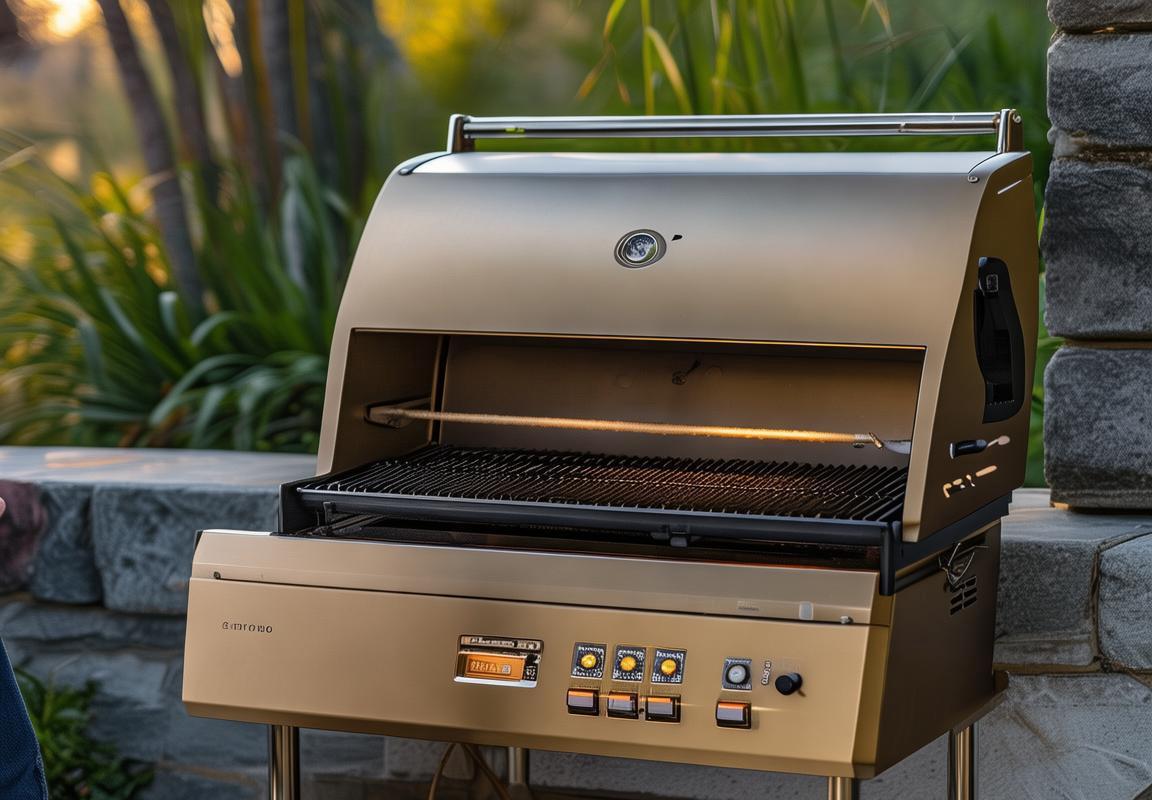
Market Analysis: Growth Trends and Consumer Preferences
The smokeless grill market has experienced remarkable growth, driven by a variety of factors that cater to evolving consumer preferences. This surge in popularity isn’t just a fleeting trend; it reflects a deeper shift in how people approach outdoor cooking. Let’s delve into the growth trends and consumer preferences shaping this market.
Consumers are increasingly seeking healthier alternatives, and smokeless grills offer a solution that aligns with this demand. These grills minimize the smoke and charred flavors associated with traditional barbecues, making them a more health-conscious choice. The reduction in smoke also means less cleanup, which is a significant draw for busy households.
The convenience factor cannot be overstated. Modern smokeless grills are designed for ease of use, with features like built-in temperature controls and digital interfaces that allow for precise cooking. This convenience appeals to the fast-paced lifestyle of many consumers, who appreciate the ability to cook a meal quickly without sacrificing quality.
Another key driver of smokeless grill popularity is the versatility they offer. These grills can handle a wide range of cooking methods, from grilling to searing, roasting, and even smoking. This versatility means that consumers can enjoy the benefits of a smokeless grill year-round, regardless of the weather.
The rise of outdoor living spaces has also played a role in the growth of the smokeless grill market. As people spend more time at home, they’re investing in their outdoor areas to create spaces that can be enjoyed all year. A smokeless grill is a centerpiece for these spaces, providing a functional and stylish addition to any patio or deck.
Environmental concerns are on the rise, and smokeless grills are seen as a more eco-friendly option. They produce less smoke and require less fuel, which appeals to consumers who are conscious of their carbon footprint. This environmental aspect has become a significant selling point for many brands.
Smart technology integration is another feature that has captured the interest of consumers. Many smokeless grills now come with Wi-Fi connectivity, allowing users to monitor and control their grills remotely via smartphone apps. This technology not only adds a layer of convenience but also empowers users to ensure their food is perfectly cooked without constant oversight.
The preference for healthier cooking methods has also influenced the market. Consumers are looking for ways to prepare food that is not only delicious but also nutritious. Smokeless grills offer a healthier alternative to cooking methods that involve high heat and can lead to the formation of harmful compounds, such as heterocyclic amines (HCAs) and polycyclic aromatic hydrocarbons (PAHs).
The market for smokeless grills has seen a surge in innovation, with manufacturers constantly pushing the boundaries of what these appliances can do. From ceramic and porcelain-coated surfaces that promote even heat distribution to non-stick coatings that reduce the need for oil, these features are becoming standard in high-end models.
Price sensitivity is a factor that cannot be ignored. While some consumers are willing to invest in premium smokeless grills, there is also a significant market for more affordable options. This has led to a diverse range of products that cater to different budgets and needs.
The growth of the smokeless grill market is also a testament to the power of digital marketing and social media. Brands are leveraging these platforms to reach consumers with engaging content and user-generated reviews, which can significantly influence purchasing decisions.
In conclusion, the smokeless grill market’s growth is a multifaceted phenomenon driven by health consciousness, convenience, versatility, environmental awareness, technological innovation, and the changing dynamics of outdoor living. As these trends continue to evolve, the market is poised to expand further, offering new opportunities for both consumers and manufacturers alike.

Environmental Impact: A Green Solution for Outdoor Cooking
The shift towards smokeless grills is not just a trend; it’s a significant step towards a greener approach to outdoor cooking. These innovative appliances offer a host of environmental benefits that are becoming increasingly appealing to consumers in the US and Europe. Here’s a closer look at how smokeless grills are contributing to a more sustainable cooking experience.
Smokeless grills eliminate the smoke and ash that traditional charcoal and wood-fired barbecues produce. This reduction in smoke has a direct impact on air quality, particularly in urban areas where outdoor cooking is a common pastime. By minimizing the release of particulate matter and other pollutants, smokeless grills help to improve local air quality and reduce the risk of respiratory issues for both humans and wildlife.
Traditional grilling methods often require the use of charcoal or wood, which are not only less convenient but also less sustainable. Charcoal production involves cutting down trees, while the burning of wood releases carbon dioxide and other greenhouse gases. Smokeless grills, on the other hand, typically use electricity or gas, which are more readily available and do not contribute to deforestation or the release of additional carbon emissions.
Another environmental advantage of smokeless grills is their energy efficiency. Many models are designed to use less energy than traditional grills, which can lead to lower utility bills and a smaller carbon footprint. The precise heat control and efficient cooking times of smokeless grills mean that less energy is wasted, making them a more eco-friendly choice for outdoor cooking.
Water conservation is another aspect where smokeless grills shine. Since they produce little to no smoke, there’s no need for water to extinguish the flames or to keep the grill area moist. This can be particularly beneficial in areas prone to drought or where water usage is closely monitored. By reducing water consumption, smokeless grills help to preserve this precious resource.
The materials used in the construction of smokeless grills also contribute to their environmental benefits. Many models are made from recyclable materials, and some are even designed to be fully recyclable at the end of their lifespan. This not only reduces waste but also promotes the use of sustainable materials in the manufacturing process.
In addition to their direct environmental impact, smokeless grills also encourage more mindful consumption habits. The controlled cooking environment of these grills often leads to less food waste, as it’s easier to monitor the cooking process and prevent overcooking. This is particularly important given the global issue of food waste, which has a significant environmental impact due to the resources used in food production.
The popularity of smokeless grills is also influenced by the growing awareness of climate change and the desire for more sustainable living practices. Consumers are increasingly looking for products that align with their values, and smokeless grills offer a tangible way to reduce their environmental footprint while enjoying the pleasures of outdoor cooking.
The packaging of smokeless grills is also a point of environmental consideration. Many manufacturers are now using biodegradable or compostable materials for packaging, reducing the amount of plastic and other non-biodegradable materials that end up in landfills.
The health benefits of smokeless grills are another factor in their environmental appeal. By reducing the amount of smoke and harmful chemicals released during cooking, these grills can contribute to a healthier outdoor cooking experience. This is particularly relevant in regions where air quality is a concern, and where the health impacts of traditional grilling methods are a topic of discussion.
Lastly, the global push for cleaner energy sources is influencing the design and use of smokeless grills. As renewable energy becomes more accessible and affordable, the use of electric smokeless grills is expected to grow, further reducing reliance on fossil fuels and promoting a cleaner energy mix.
In conclusion, the environmental impact of smokeless grills is multifaceted, offering a green solution for outdoor cooking that addresses air quality, resource conservation, and the broader sustainability goals of consumers and manufacturers alike. As awareness of these benefits continues to rise, it’s likely that smokeless grills will play an increasingly significant role in the future of eco-conscious cooking.
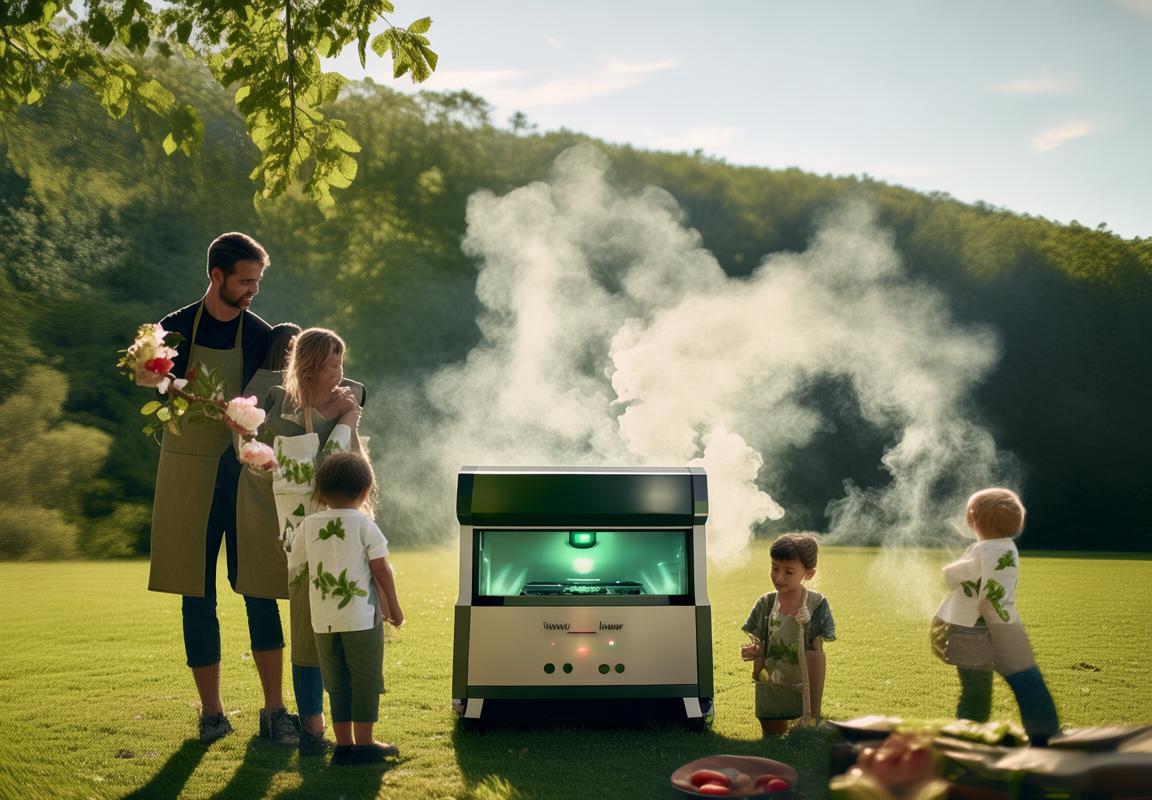
Technological Advancements Driving the Smokeless Grill Market
The smokeless grill market has been propelled by a series of technological advancements that have transformed the way we think about outdoor cooking. From the basics of heat distribution to the integration of smart features, these innovations have made smokeless grills not just a trend but a necessity for many outdoor enthusiasts. Here’s a closer look at the key technological strides that are shaping the smokeless grill market:
Efficient Heat Management SystemsHeat distribution is crucial for consistent cooking results, and smokeless grills have made significant strides in this area. Advanced heat management systems now ensure that heat is evenly distributed across the cooking surface, eliminating cold spots and reducing the risk of overcooking. Features like convection fans and multi-layered cooking grids contribute to a more efficient cooking process.
Smart Control TechnologySmart control technology has become a hallmark of modern smokeless grills. Users can now monitor and adjust their grills remotely via smartphones or tablets, thanks to integrated Bluetooth or Wi-Fi capabilities. This allows for precise temperature control and the ability to start cooking sessions well before the grill is ready, ensuring that food is perfectly cooked to the desired temperature.
Automated Cleaning SystemsOne of the biggest drawbacks of traditional grilling is the clean-up process. Smokeless grills, however, come with automated cleaning systems that simplify the post-cooking routine. Self-cleaning functions, often achieved through a combination of high heat and a special coating on the cooking surface, mean that there’s less need for manual scrubbing, saving time and effort.
Improved Materials and CoatingsThe materials used in smokeless grills have evolved to be more durable and heat-resistant. High-quality stainless steel, ceramic, and porcelain-coated surfaces are now standard, providing a longer lifespan and better resistance to rust and corrosion. These materials also contribute to the longevity of the grill and the evenness of the cooking process.
Enhanced Safety FeaturesSafety has always been a concern when it comes to outdoor cooking, and smokeless grills have addressed this with innovative features. Automatic shut-off mechanisms, temperature sensors, and flame guards are just a few examples of how these grills have been designed to prevent accidents and protect users and their surroundings.
Sustainability and Energy EfficiencyWith growing environmental concerns, the smokeless grill market has embraced sustainability. New models are designed to be energy-efficient, using less fuel and reducing emissions. This not only benefits the environment but also saves users money on fuel costs over time.
Customization and PersonalizationTechnology has also allowed for greater customization and personalization of smokeless grills. Users can now choose from various sizes, shapes, and configurations to suit their specific needs. Whether it’s a compact model for small spaces or a large, multi-zone grill for entertaining, there’s a smokeless option for everyone.
Interactive Cooking GuidesMany smokeless grill manufacturers are integrating interactive cooking guides into their products. These guides provide users with step-by-step instructions, recipes, and tips for cooking a wide range of foods. This feature is particularly useful for those new to outdoor cooking or for those looking to expand their culinary skills.
Infrared Cooking TechnologyInfrared cooking has been a game-changer for smokeless grills. This technology uses direct heat to cook food, resulting in faster cooking times and a juicier, more flavorful outcome. Infrared burners are now a common feature in many high-end smokeless grills, offering a more precise and efficient cooking experience.
Connectivity and IntegrationThe ability to connect smokeless grills with other smart home devices and apps has become more prevalent. Users can integrate their grills with systems that control lighting, music, and even the home security system, creating a seamless outdoor cooking experience.
As the smokeless grill market continues to grow, these technological advancements are likely to become even more sophisticated. The future of outdoor cooking looks to be one where convenience, efficiency, and sustainability go hand in hand, all thanks to the relentless pursuit of innovation in the grill industry.
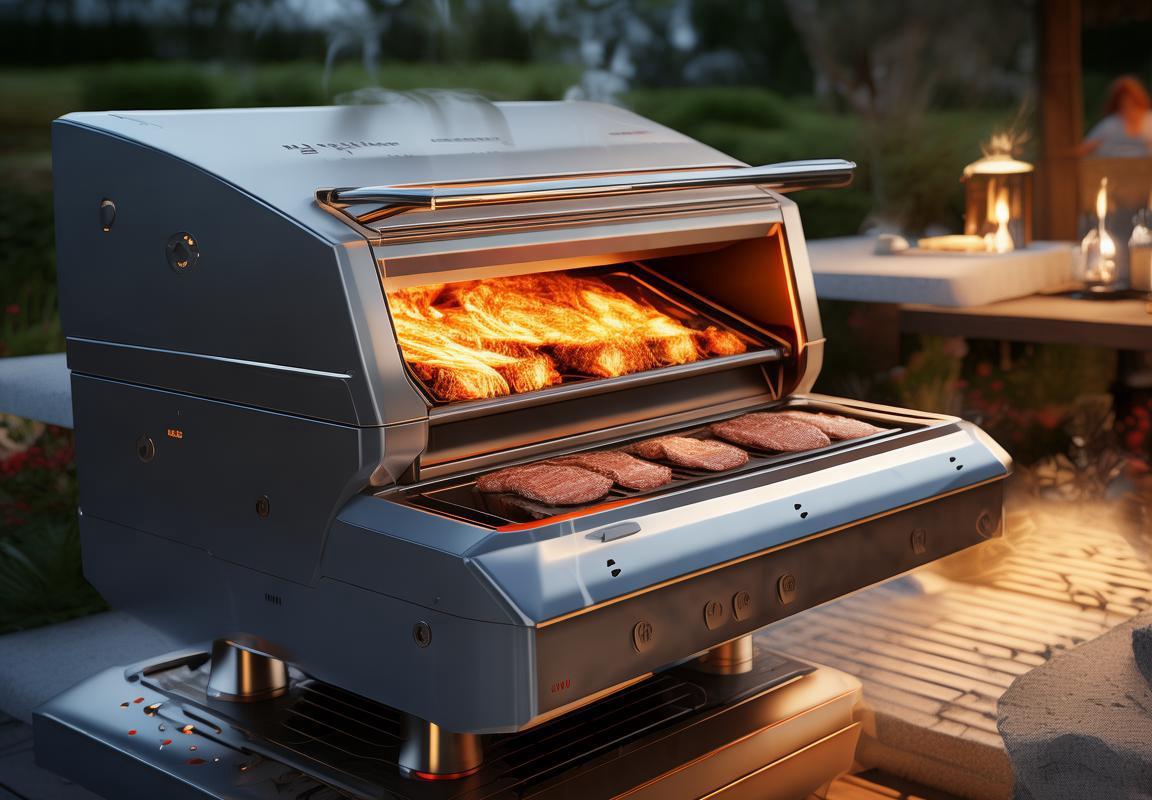
Innovative Brands Leading the Smokeless Grill Revolution
In recent years, the smokeless grill market has seen a surge in popularity, with innovative brands at the forefront of this revolution. These brands are not just selling grills; they are redefining the outdoor cooking experience. Here’s a look at some of the key players shaping the smokeless grill landscape.
The rise of smart technology has allowed for the integration of advanced features in smokeless grills, making them more than just cooking appliances. Brands like Char-Broil and Weber have embraced this trend, offering models that can be controlled via smartphone apps. This level of connectivity provides users with the convenience of preheating their grill, adjusting temperatures, and monitoring cooking progress from the comfort of their home.
Another aspect that sets innovative smokeless grill brands apart is their focus on design and aesthetics. Companies like Traeger and Pit Boss have designed grills that are not only functional but also visually appealing, with sleek lines and durable materials. This has made smokeless grills a statement piece for outdoor kitchens, appealing to consumers who value both form and function.
Durability is a crucial factor in the smokeless grill market, and several brands have made significant strides in this area. For instance, Green Mountain Grills has built a reputation for their robust construction, using heavy-duty stainless steel and high-quality components. This emphasis on longevity ensures that consumers are investing in a grill that can withstand the test of time and various weather conditions.
One of the most notable features of smokeless grills is their ability to reduce smoke and odors. Brands like Breville and Napoleon have developed proprietary technologies that minimize smoke emissions, making them a greener option for outdoor cooking. This has been a major draw for environmentally conscious consumers who are looking for more sustainable ways to enjoy their favorite meals.
Innovation in the smokeless grill market is not limited to technology and design; it also extends to the variety of cooking options these grills offer. Many brands now provide a range of attachments and accessories that allow users to smoke, bake, and even sear their food. This versatility has made smokeless grills a one-stop solution for outdoor enthusiasts who want to diversify their cooking techniques.
Safety is another area where innovative brands have made significant improvements. With features like automatic shut-off systems and cool-touch handles, grills from brands like Camp Chef and Masterbuilt have reduced the risk of accidents. This has made smokeless grills more accessible to families and those who may not be as experienced with outdoor cooking.
The customer experience is paramount for these brands, and they have invested in creating user-friendly interfaces and intuitive controls. From easy-to-read digital displays to intuitive button layouts, these brands have made sure that even those new to smokeless grilling can enjoy a seamless cooking experience.
The rise of subscription-based services has also been a game-changer for smokeless grill brands. Companies like Pit Boss offer monthly subscription boxes that include a variety of accessories and spices, encouraging ongoing engagement with their brand. This approach not only fosters customer loyalty but also provides a steady stream of revenue for the brands.
Lastly, the marketing strategies employed by these innovative brands have been pivotal in their success. From influencer partnerships to social media campaigns, these brands have leveraged digital platforms to reach a wider audience. They have also been successful in leveraging the power of user-generated content, with many customers sharing their experiences and recipes online, further boosting brand visibility and credibility.
In conclusion, the smokeless grill revolution is being led by brands that are pushing the boundaries of outdoor cooking technology. Through a combination of smart features, sleek designs, durability, environmental consciousness, versatility, safety, user-friendly interfaces, subscription services, and innovative marketing, these brands are not just selling grills; they are selling a lifestyle. As the market continues to grow, it’s these innovative brands that will likely lead the way, shaping the future of outdoor cooking.
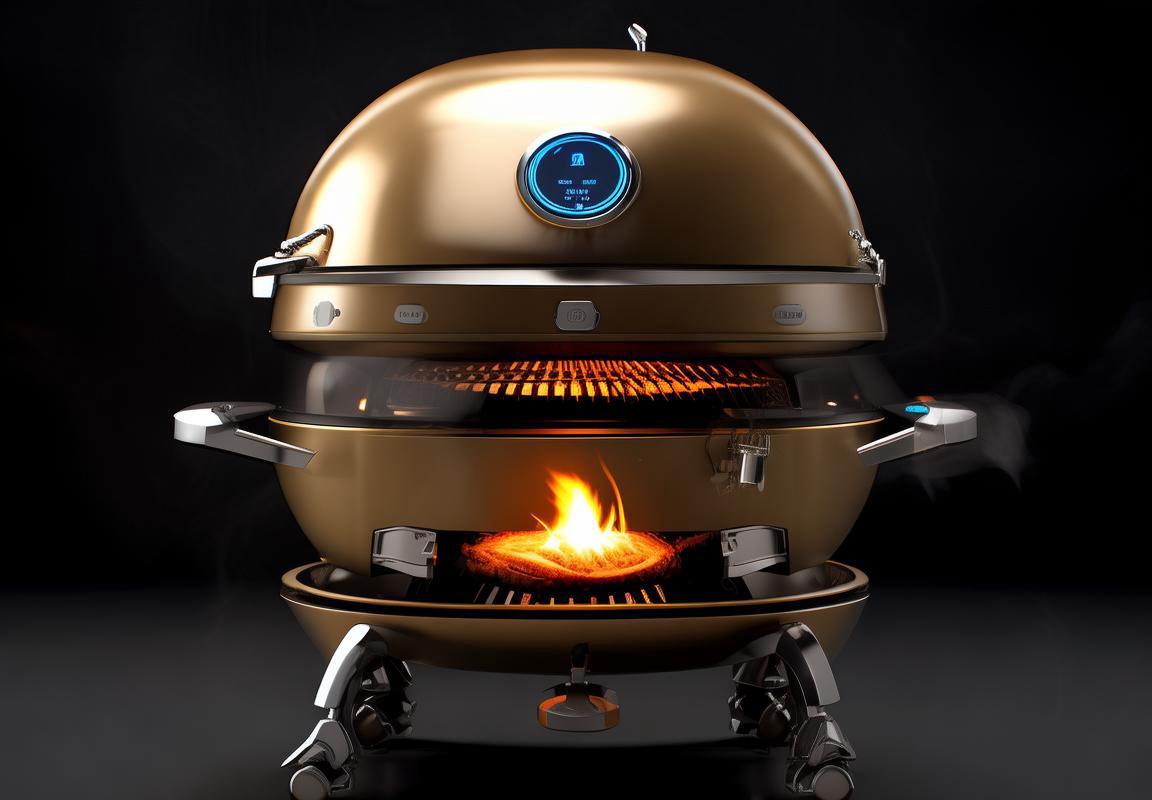
Consumer Insights: What Homeowners Are Looking for in Smokeless Grills
Modern homeowners are increasingly seeking smokeless grills for their outdoor cooking needs, and their preferences are shaped by a blend of convenience, functionality, and environmental considerations. Here’s a look into what these consumers are looking for in their smokeless grill purchases:
Ease of Use and CleanupConsumers today value simplicity in their appliances, and this extends to their outdoor cooking tools as well. A key feature sought after is the ease of use, with many homeowners looking for grills that require minimal effort to start and operate. Smokeless grills that offer touchpad controls, intuitive interfaces, and automated cooking settings are often favored. Additionally, the cleanup process is a significant concern, and grills with non-stick surfaces, easy-to-clean components, and detachable parts for thorough washing are highly sought after.
Cooking VersatilityHomeowners are no longer satisfied with one-dimensional cooking appliances. The ability to grill, bake, roast, and even smoke food on a single unit is a major draw. Smokeless grills that come with adjustable heat settings, multiple cooking surfaces, and additional features like a rotisserie function or a searing grate are becoming increasingly popular. The versatility allows for a wider range of recipes and cooking techniques, appealing to those who enjoy experimenting with different cuisines.
Energy Efficiency and Cost-EffectivenessWith the rising cost of living, energy efficiency has become a significant factor in purchasing decisions. Homeowners are gravitating towards smokeless grills that consume less power, either through improved heat retention or more efficient burners. Moreover, grills that offer fuel savings in the long run, such as those that use less charcoal or propane, are highly attractive. The promise of cost-effectiveness over time is a compelling reason for many consumers to invest in these appliances.
Safety and HealthSafety is paramount in any home purchase, and smokeless grills are no exception. Features like built-in safety shut-offs, heat-resistant surfaces, and non-toxic materials are crucial for consumers looking to ensure a safe cooking environment. Additionally, the health benefits of smokeless grills, such as reduced smoke and cleaner air, are increasingly important. Grills that allow for healthier cooking methods, like using infrared heating, are often seen as a safer option for those with health concerns.
Portability and Compact DesignNot all homeowners have the luxury of a large outdoor space. For those with smaller patios, balconies, or even no outdoor space at all, portable smokeless grills are a game-changer. The demand for compact, lightweight, and easily stored grills has grown, with foldable designs and compact dimensions being highly sought after. The ability to take these grills on camping trips or tailgating events adds to their appeal.
Design and AestheticsAesthetics play a role in the home, and this extends to outdoor cooking appliances. Modern homeowners look for grills that not only serve a functional purpose but also complement their outdoor decor. Sleek designs, durable materials, and even customization options like color choices or add-ons like side burners or warming racks are all factors that influence the purchase decision.
Brand Reputation and WarrantyThe reputation of the brand is another critical factor for many consumers. Homeowners tend to trust well-established brands that offer reliable products and excellent customer service. The inclusion of a solid warranty period can be a deciding factor, as it provides peace of mind and assurance of the manufacturer’s confidence in their product’s longevity.
Sustainability and Eco-Friendly PracticesWith the growing awareness of environmental issues, sustainability has become a key consideration. Homeowners are increasingly interested in grills that are made from recycled materials, use renewable energy sources, or are designed for longevity to reduce waste. Eco-friendly branding and certifications from reputable organizations can significantly sway a consumer’s purchasing decision.
In conclusion, homeowners seeking smokeless grills are looking for a balance of ease, versatility, cost-effectiveness, safety, and sustainability. As the market continues to evolve, the grills that offer these features in innovative ways are likely to capture the attention and loyalty of consumers.
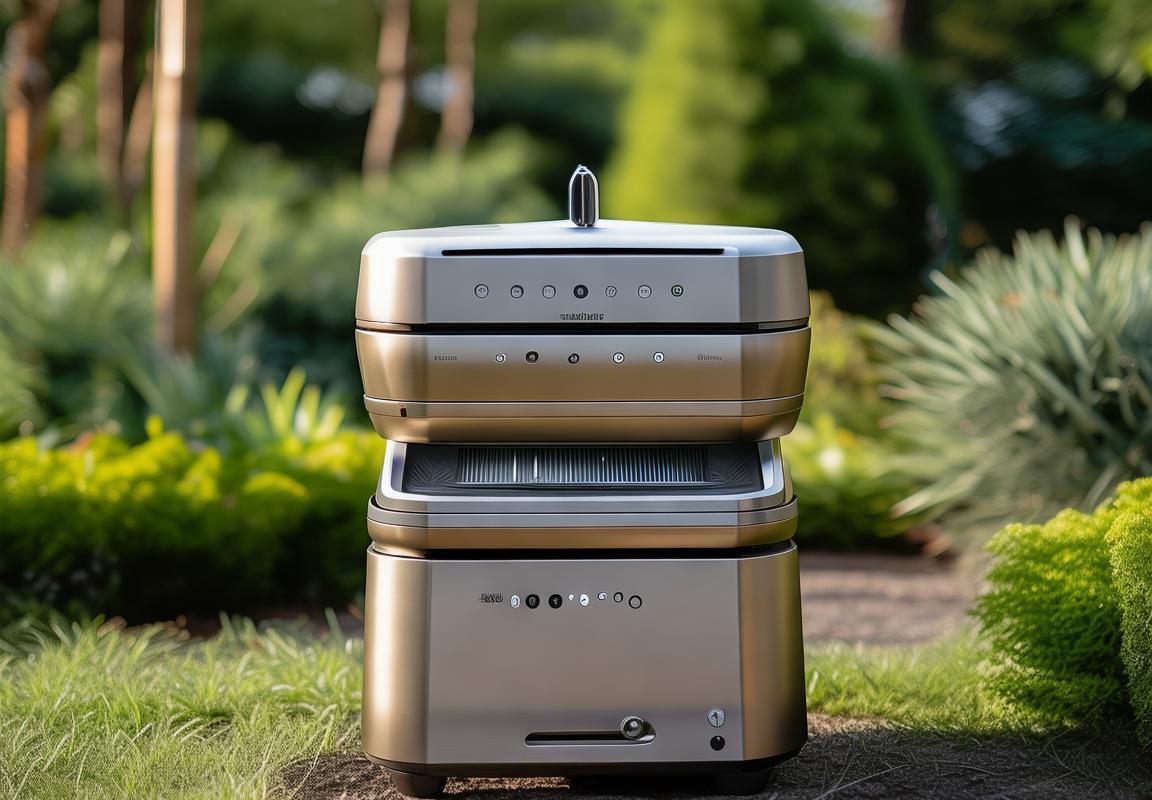
The Future of Smokeless Grills: Predictions and Opportunities
The smokeless grill market has been heating up, and it’s not just because of the rise in outdoor cooking enthusiasts. There’s a palpable shift in consumer preferences that’s driving the demand for these innovative cooking solutions. Homeowners are seeking more than just a way to grill; they’re looking for convenience, health benefits, and a greener lifestyle. Let’s delve into the key features that are setting smokeless grills apart in the eyes of consumers.
Homeowners are increasingly health-conscious, and the allure of smokeless grills lies in their ability to reduce harmful smoke emissions. These grills use technology to capture and control the smoke, resulting in a cleaner cooking environment. The absence of smoke not only improves air quality but also makes the cooking area safer and more enjoyable for those with respiratory sensitivities.
The convenience factor is another standout feature. Traditional grilling can be a messy affair, with smoke and flare-ups often creating a chaotic experience. Smokeless grills, on the other hand, offer a more controlled cooking process. They often come with features like automatic temperature control and removable drip trays, which make cleaning up a breeze. Homeowners appreciate the ease of use and the ability to enjoy a meal without the hassle of dealing with smoke and ash.
Efficiency is a significant draw for many homeowners. Smokeless grills can often cook food faster than traditional barbecues, and they do so with less fuel. This efficiency not only saves money on gas or charcoal but also reduces the carbon footprint associated with outdoor cooking. The ability to quickly prepare a meal without sacrificing flavor is a compelling reason for consumers to choose smokeless grills over their traditional counterparts.
Modern homeowners value versatility, and smokeless grills deliver on this front. Many models are designed to cook a variety of foods, from meats to vegetables, and even desserts. The ability to sear, smoke, and bake in one appliance is a game-changer for those who love to experiment with different cooking techniques. The flexibility to switch between cooking methods without the need for additional equipment is a feature that resonates with consumers looking for a one-stop cooking solution.
Another key feature that sets smokeless grills apart is their compact and portable design. Homeowners with limited outdoor space or those who enjoy grilling on the go find these grills particularly appealing. The lightweight and easy-to-move nature of smokeless grills make them a convenient choice for picnics, tailgating, or even camping trips. This portability allows for a smoke-free grilling experience almost anywhere.
Safety is a paramount concern for homeowners, and smokeless grills address this with their flameless design. Without open flames, the risk of accidental burns or fires is significantly reduced. This feature is especially important for families with children or pets, as it ensures a safer outdoor cooking environment. The peace of mind that comes with knowing your family is protected while enjoying a meal outdoors is a valuable aspect of smokeless grills.
The integration of smart technology is another feature that’s catching the eye of consumers. Many smokeless grill models now come with built-in thermometers, timers, and even Bluetooth connectivity, allowing users to monitor and control the cooking process remotely. This level of connectivity and control is appealing to tech-savvy homeowners who appreciate the convenience of modern technology in their everyday lives.
Lastly, the aesthetic appeal of smokeless grills cannot be overlooked. With sleek designs and a variety of colors and finishes available, these grills can complement any outdoor kitchen or patio setup. Homeowners are not just looking for a cooking appliance; they’re seeking an addition to their outdoor living space that enhances its overall look and feel.
In conclusion, the key features of smokeless grills—cleaner cooking, convenience, efficiency, versatility, portability, safety, smart technology, and aesthetic appeal—are the factors that are making them a favorite among homeowners. As the market continues to grow, these features are likely to evolve, offering even more reasons for consumers to embrace the smokeless grill revolution.